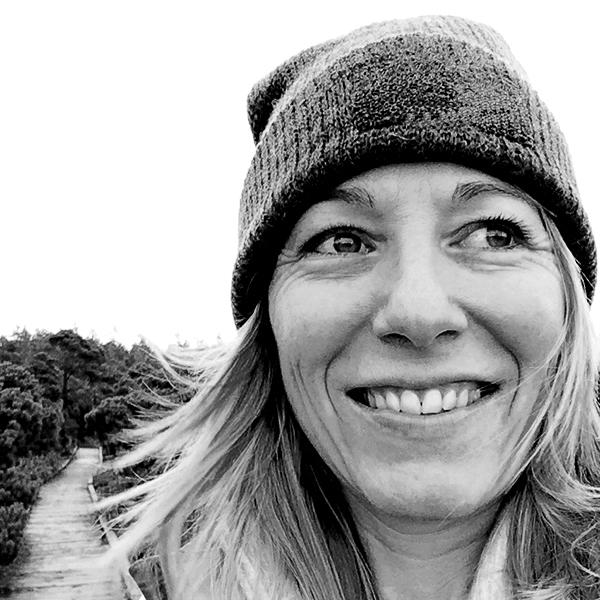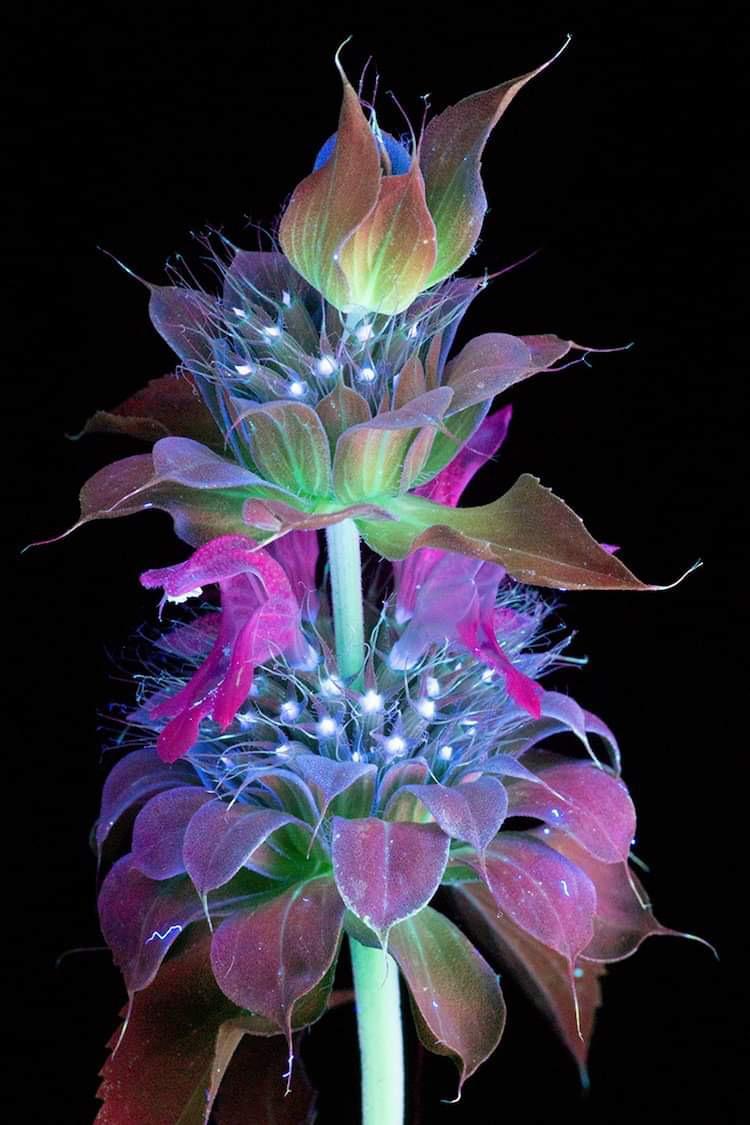
7 minute read
with Brennan Richards Michelle Fehler
Michelle Fehler
a conversation with Brennan Richards
Michelle is a Biomimicry Professional and a Visual Communication Designer who is passionate about connecting Nature’s strategies to design. Her goal is to enable designers to tap into this vast database of inspiration in order to find innovative and creative solutions. Her research focuses on defining a life-centered design thinking methodology that allows the infusion of biomimicry thinking into the traditional human-centered design process. She is looking at various tools and processes that make the biomimetic approach more accessible to designers.
Brennan Richards: There’s been a huge shift in the past year in terms of how we communicate and connect with other people, and one of the most important aspects of biomimicry is reconnecting to and observing nature. How can people continue to connect with and observe nature from the safety of their own homes?
Michelle Fehler: There is a lot of change that has happened, especially during the pandemic, in terms of how we communicate with each other, what we do, and how we live our lives. Hopefully, people have found ways to find moments to sit in their homes and look outside and perhaps watch the birds that they might normally not see. There are a lot of really great tools on how to connect with nature: The Biomimicry Institute at the beginning of the pandemic put out a set of prompts that people can tap into on how to make it fun to go outside, there are different activities that they prompt, looking for a specific color outside or looking for specific shapes or looking for specific connections between species outside. Some of them are drawing, some are photography, some of them are just writing observations, so there’s a lot of different methods of connecting with nature from home depending on what people’s needs are. Some people like to be active outdoors, so hiking, running, biking, and kayaking are great ways to relieve stress. Watching documentaries, tapping into the resources that we find online, YouTube videos, BBC, PBS, all have really great documentaries that talk about the natural world. There are a lot of different ways to connect with nature from home, and I think the most important part is to keep in mind that we don’t have to go on a long hike in order to connect with nature, it’s possible to just open up the window and take five minutes to look at a tree, see what is happening outside, or watch the flowers come up now and watch the bees go from one flower to another. It can be a very simple gap in your day to connect with nature from home.
I completely agree, the odd thing I’ve found is that the pandemic has stopped us from connecting and communicating with other people, but it has also forced a lot of people to reconnect with nature. I couldn’t see my friends, but I could go sit in my backyard. The pandemic has forced a lot of people to come back to nature, because there are things that we can still do, like hiking and going for walks. I remember when the pandemic started I was in California, and I had never seen any of my neighbors before, but everyone was sitting in their front lawn with their families. I feel that it’s been very unique in that a lot of people have been forced to sort of isolate from each other, but returned to nature, so I wanted to get your thoughts on that.
Yes, the idea of freedom gardens came up, where people are planting their own food. This is something that we can do to ensure our food supply. This is very restorative and it’s a great way to tap into your surroundings. People could try to have a basil plant in a pot and by just watering it every day, allows us to connect with.
Organisms communicate and connect in millions of different ways, what are some of the most fascinating methods of communication that can be seen in nature?
So there’s all kinds of different senses, and even more senses than we have as humans. As humans, we have our hearing, we have our sight, we have touch, we have taste, we have smell, and there are some organisms that also leverage those senses, but they have also other senses. For example, there are seabirds that have a magnetic capacity to tap into the earth’s magnetic field so they always know how and where to migrate to. Also, for example, water striders work with vibrations, elephants as well use vibrations to communicate the location of others, to communicate danger, and to communicate resources. If they find a watering hole they can let their peers know that there is something there, and to come to join them. There’s a lot of different senses that
we might not have tapped into as a species yet. Our human eyes are limited in what kind of color wavelengths we can see, but other species tap into the UV colors. Our vision only recognizes 0.0035 percent of the full electromagnetic spectrum, other species can tap into way more, to see each other and to communicate with each other.
I was reading about the mantis shrimp, that has sixteen different color cones, while humans have just three. It’s interesting to think of the color spectrums that exist which our minds can’t understand because we can only interpret color through the way that we see color.
It is super interesting, and there are images out there that are taken of flowers that illustrate how the flower looks to a bee. They are so beautiful and stunning because it’s new to us, but if you go outside and you look at what kind of wildflowers are coming up right now, you can look at the colors and you can kind of predict which pollinator will be the one to pollinate the flowers. There are certain pollinators that like to have the magentas, like hummingbirds love magentas, and then the bees that might be drawn to orange, yellows, and reds, and then there is the white color, which attracts the night
We are nature, some of our behavior comes from being part of nature, so in a way everything we do in order to not soil the surrounding and nourish the surroundings is biomimetic.
I think one way we could practice this already without the research is to take away our main sense which is vision. If you take away the vision, and you walk around the world blind, you depend on many other senses to guide you. There’s an exercise that we do in biomimicry where we have people pair up, and it is with somebody that you trust, but you have a blindfolded person, and the other person guides that person through nature from one plant to another. It allows us to experience pollinators like bats and beetles. We could be tapping into those nuances on what it means to see a color, because nature doesn’t just put out randomness, nature has a specific goal and is very exact in how it does what it does because it’s expensive to do anything in nature. There’s always a reason for what is happening in nature.
Are there any biomimetic methods of communication that we use now as humans that we might not be aware of?
I definitely feel that awareness because when we meet some people we have this intuition about them, but you can’t say exactly what you’re going off of. I think the process of us as a species starting to understand those senses might improve our lives, because we could have a more full understanding of how we interpret the world.
Michael J. Cohen defined 54 natural senses in his research we as humans have, but are not aware of all the time. If you think about it, the sense of gravity, the sense of direction, sense of pressure, there were several of them that I find very interesting that we all tap into but not consciously. There might be some explorations that we could look into, and how especially architecture can tap into those senses specifically, allowing us to experience them in a more conscious way. We can feel them, but we do it unconsciously right now.
nature in a different way, and so you could actually for the first time really touch plants and experience them completely differently than from if your vision was engaged. I think those experiences are always very fun, there’s a lot of giggling and laughing going on when we do that. It’s very fun to experience those senses that are not trained anymore, our ancestors needed to tap into those senses way more than we do, because we chose to take vision and hearing as the main senses.

Photography by Craig P Burrows. Photographer isolates the UV spectrum to show an abstracted speculation of how flowers may be highlighted to bees using the UV spectrum available to human eyes.










